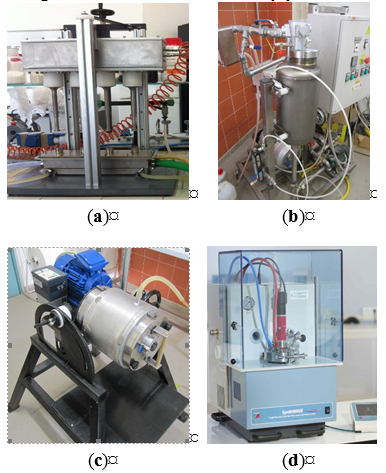Enabling Technologies and Green Processes for Biorefinery Strategies and Biomass Valorization
A special issue of Molecules (ISSN 1420-3049). This special issue belongs to the section "Green Chemistry".
Deadline for manuscript submissions: closed (10 December 2015) | Viewed by 80748
Special Issue Editors
Interests: green chemistry; process intensification; green extraction; enabling technologies (ultrasound, microwaves, hydrodynamic cavitation, ball milling, flow chemistry); sustainable chemical processes
Special Issues, Collections and Topics in MDPI journals
Interests: green extraction; alternative solvents; innovative technologies; original procedures; microwave; ultrasound; intensification
Special Issues, Collections and Topics in MDPI journals
Special Issue Information
Dear Colleagues,
In the last decade, the development of alternative sustainable chemical processes has exploited suitable enabling technologies. Starting from a rational approach to biorefinery strategizing for agri-food waste valorization, the cost-effective production of high-value natural products and food ingredients and the recovery of co-products from food processing wastes are some of the main goals of all industrialized countries. In this context, a pivotal role is played by enabling technologies, such as ultrasound (US), microwaves (MW), and ball mills.
Compared to classic batch reactors, flow systems stand out for their greater efficiency and flexibility, and are well suited for high-throughput applications, due to the lower energy consumption. Flow-multihorn US reactors (a) and cavitational turbines (b) enable fast cell wall disruption via the intense cavitation and subsequent concentration of mobilized cytoplasmic material, even in simple water. Besides cryomilling applications, the mechanochemical technique opened the way to solventless plants extractions, with suitable solid matrices (cyclodextrins, adsorbing resins, oils), even at pilot (c) and industrial scales. Outstanding achievements have been obtained with MW-assisted processes, in particular with subcritical water (d) or pressurized water steam.
Bio-waste is generally a negative-cost feedstock for the potential production of high value-added chemicals and bioenergy. This Special Issue of Molecules aims to describe existing studies and applications of non-conventional energy sources within this field. Comparisons with classic procedures are a good means with which to highlight the huge advantages and potential scalabilities of these so-called “enabling technologies”.
Although many advances have been made during the past decade, the most exciting results in this field are surely yet to come.

(a) Flow-multihorn ultrasonic reactor, (b) Cavitational turbine, (c) Pilot-scale ball mill, (d) High-pressure microwave reactor.
Prof. Dr. Cravotto Giancarlo
Prof. Dr. Farid Chemat
Guest Editors
Manuscript Submission Information
Manuscripts should be submitted online at www.mdpi.com by registering and logging in to this website. Once you are registered, click here to go to the submission form. Manuscripts can be submitted until the deadline. All submissions that pass pre-check are peer-reviewed. Accepted papers will be published continuously in the journal (as soon as accepted) and will be listed together on the special issue website. Research articles, review articles as well as short communications are invited. For planned papers, a title and short abstract (about 100 words) can be sent to the Editorial Office for announcement on this website.
Submitted manuscripts should not have been published previously, nor be under consideration for publication elsewhere (except conference proceedings papers). All manuscripts are thoroughly refereed through a single-blind peer-review process. A guide for authors and other relevant information for submission of manuscripts is available on the Instructions for Authors page. Molecules is an international peer-reviewed open access semimonthly journal published by MDPI.
Please visit the Instructions for Authors page before submitting a manuscript. The Article Processing Charge (APC) for publication in this open access journal is 2700 CHF (Swiss Francs). Submitted papers should be well formatted and use good English. Authors may use MDPI's English editing service prior to publication or during author revisions.
Keywords
- biorefinery
- green extraction
- innovative techniques
- valorization of byproducts
- biomass for food, fuel, and ingredients
Benefits of Publishing in a Special Issue
- Ease of navigation: Grouping papers by topic helps scholars navigate broad scope journals more efficiently.
- Greater discoverability: Special Issues support the reach and impact of scientific research. Articles in Special Issues are more discoverable and cited more frequently.
- Expansion of research network: Special Issues facilitate connections among authors, fostering scientific collaborations.
- External promotion: Articles in Special Issues are often promoted through the journal's social media, increasing their visibility.
- e-Book format: Special Issues with more than 10 articles can be published as dedicated e-books, ensuring wide and rapid dissemination.
Further information on MDPI's Special Issue polices can be found here.







